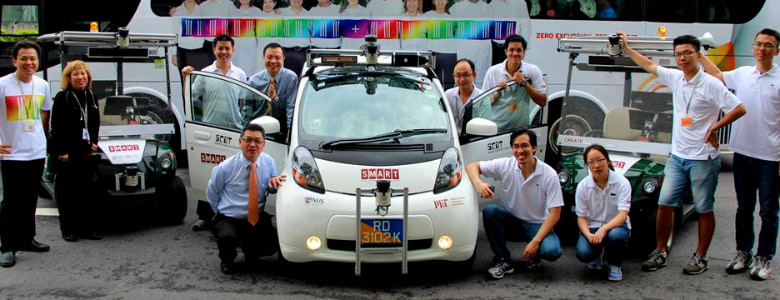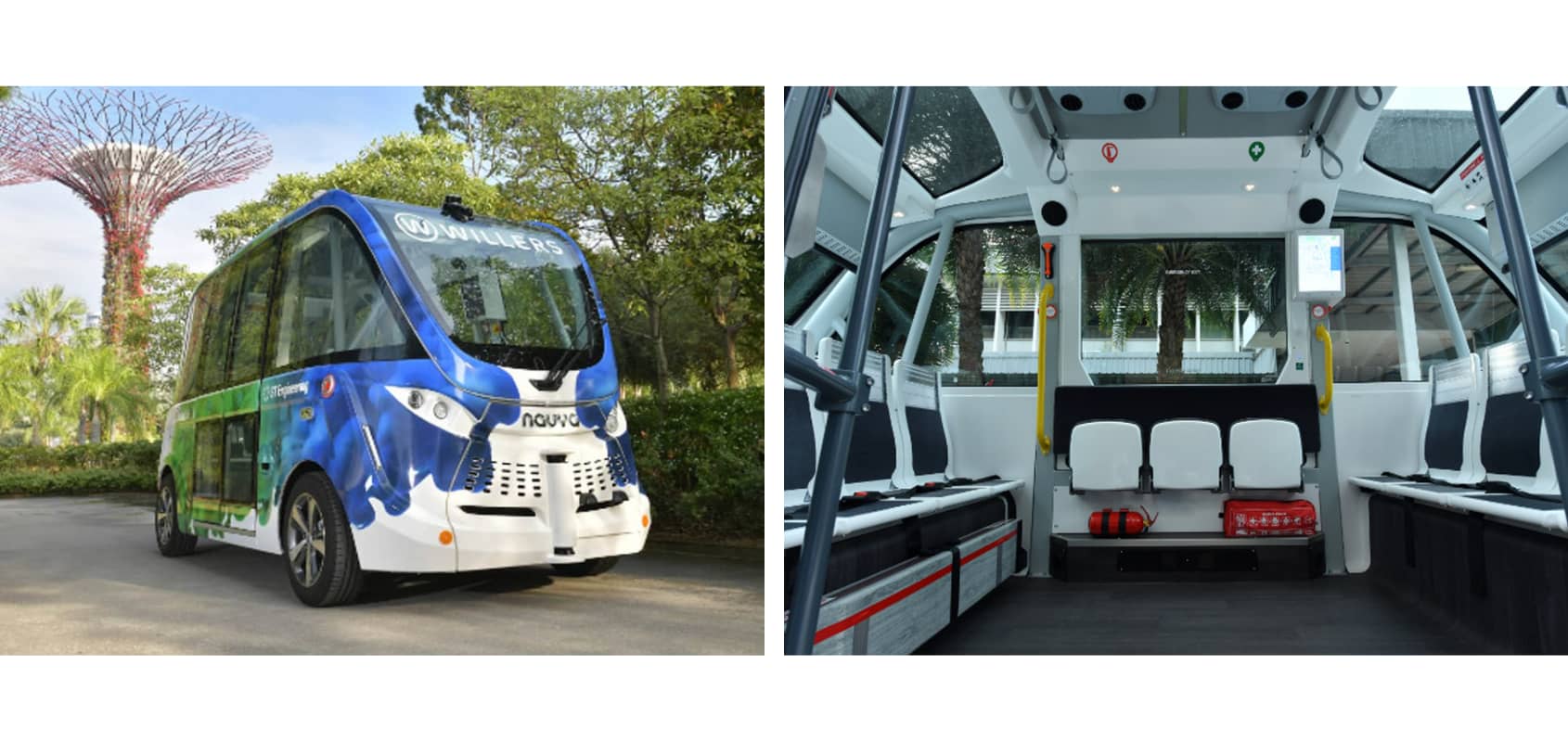Autonomous Vehicles in Singapore

What are Autonomous Vehicles (AVs)?
Autonomous vehicles, also known as self-driving cars or driverless cars, are vehicles equipped with advanced technologies that allow them to navigate and operate with minimal human intervention. These vehicles use a combination of sensors, cameras, radar, complex algorithms and software to perceive their environment — like interpreting traffic conditions and surrounding obstacles — and make decisions in real time.
Car trivia: The word ‘automobile,’ coined in the late 19th century, is a fusion of the Greek word, autos, meaning ‘self’, and the French word, mobile, for ‘moving’.
Yet, the automobile never truly lived up to its name of being a self-moving entity, always requiring a driver at the steering wheel.
Until today, where AVs exist.
Japanese automobile manufacturer Nissan has been testing a prototype AV since 2013, while earlier this year, in March 2016, the Korean government granted a temporary license plate to its first driverless car, a Hyundai Genesis.
To stay ahead of the curve in urban mobility, Singapore has started testing AVs on its roads since 2011.
Recently, MIT technology startup nuTonomy launched its first-in-the-world public robo-taxi trial within the one-north research district.
This is one example of Singapore’s ongoing efforts to test-drive AVs in regular traffic.
As Singapore gears up towards a driverless future, we can look forward to seeing more of these self-driving cars in our neighbourhoods.
Here are three other locations in Singapore where AVs have hit the tarmac.
1. Auto Riders at Gardens by the Bay

Image taken from Gardens by the Bay.
Singapore’s Gardens by the Bay, world-renowned for its iconic Super Trees and giant climate-controlled domes, also houses Asia’s first fully operational self-driving vehicle. Deployed as part of the Gardens’ outdoor tours, the driverless Auto Riders ply a fixed route and allow visitors to cover more ground of the sprawling 101-hectare attraction for a small fee of S$5.
Manufactured in Europe and modified by Singapore-based ST Engineering, the auto riders are customised for optimal performance under local weather conditions and the mixed traffic environment of the gardens.
Acting as the vehicle’s ‘eyes’, cameras at its front and back work together with a laser scanning system to help the auto rider identify its own position relative to other objects, adjusting its course appropriately. Under wet weather conditions when visibility might be poor, radio frequency identification (RFID) technology is also used to assist navigation.
To ensure the smoothness of the ride and the safety of its ten passengers, an on-board processing technique known as navigation technology sensor fusion acts as the Auto Rider’s ‘brain’, deciding which sensor input is more reliable under changing circumstances.
2. NAVIAs at Nanyang Technological University
Nanyang Technological University’s (NTU) Energy Research Institute at NTU (ERI@N) is also actively engaged in AV research in collaboration with French startup Induct Technologies and JTC Corporation.
Boasting not one but two electric AVs called NAVIAs, each vehicle can carry eight passengers at a time and travel at a maximum speed of 20.1 km/h, employing laser sensors and cameras for navigation.
The NAVIAs are occasionally deployed as a shuttle service exclusive to staff and students of ERI@N, traversing a stretch of road between the Clean Tech Park and NTU.
This route is set to be expanded in the second half of 2017 with the opening of a dedicated 1.8-hectare test circuit under the Centre of Excellence for Testing and Research of AVs-NTU (CETRAN).
At the same time, the NTU researchers are working on greater battery capacity and fast-charging ports, which are essential if electric Autonomous Vehicles are to become a mainstream mode of land transportation in Singapore.
3. SCOT at the National University of Singapore
The Shared Computer Operator Transport, or SCOT, is the brainchild of the National University of Singapore (NUS) and the Singapore-MIT Alliance for Research and Technology (SMART).
Modified from a Mitsubishi i-Miev, SCOT (top photo) has been fitted with cost-efficient laser sensors and cameras, enabling it to operate independently from the Global Positioning System (GPS).
This is especially critical when travelling in underground tunnels where GPS signals may be weak.
On a full charge, which takes between six to eight hours, SCOT is capable of traversing 100-130 km at a maximum autonomous speed of 25 km/h. The driverless car might be spotted on test drives around the NUS campus and one north, though as of now, members of the public can’t tag along for the ride just yet.
According to its inventors, SCOT was developed specifically to solve the ‘first- and last-mile’ problem in urban environments — the commute from your doorstep to the nearest main public transportation network (e.g. the MRT station), and the commute from where you alight the transportation network to your final destination.
If SCOT were to hit the roads someday, it may become a viable alternative to walking and cycling, the current de facto solution to the first-and last-mile problem.

